
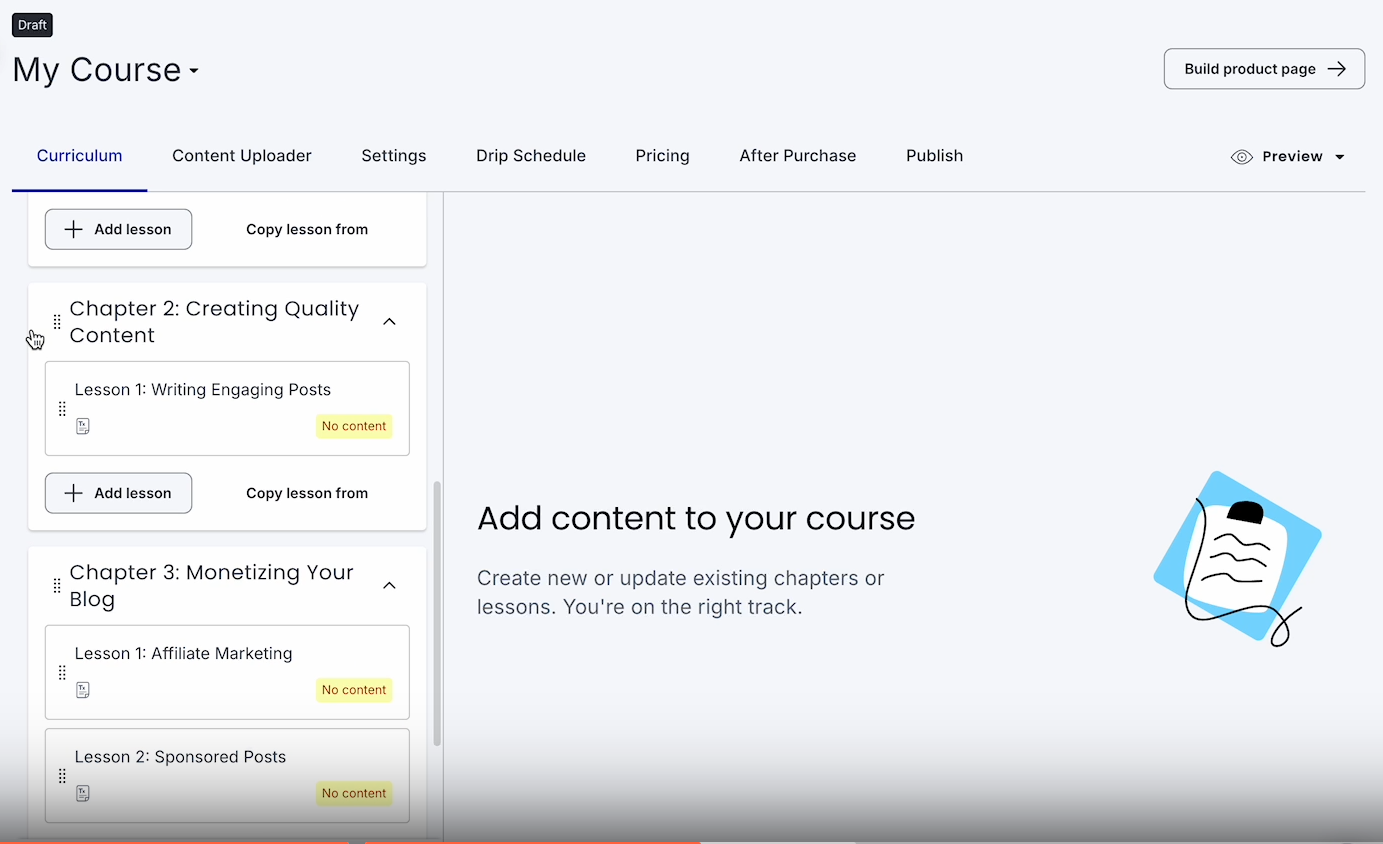
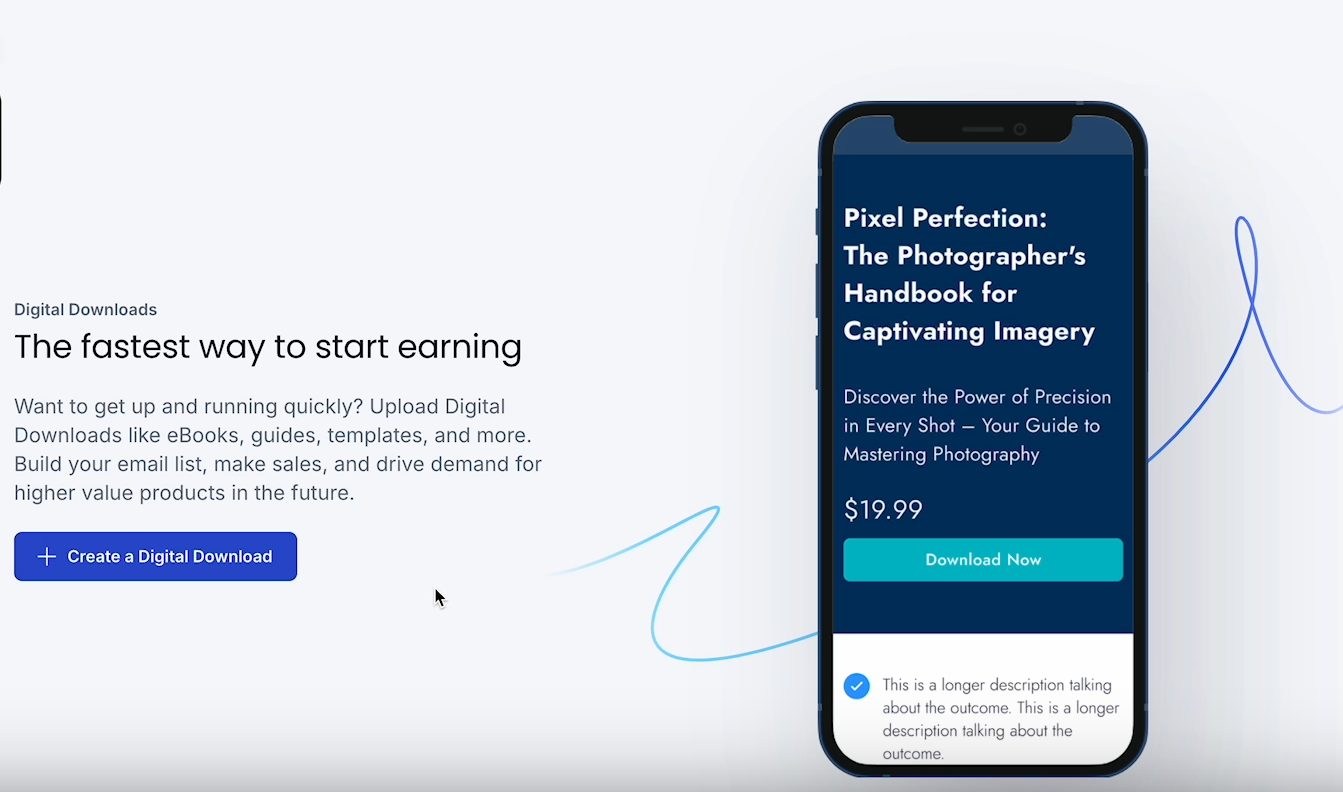
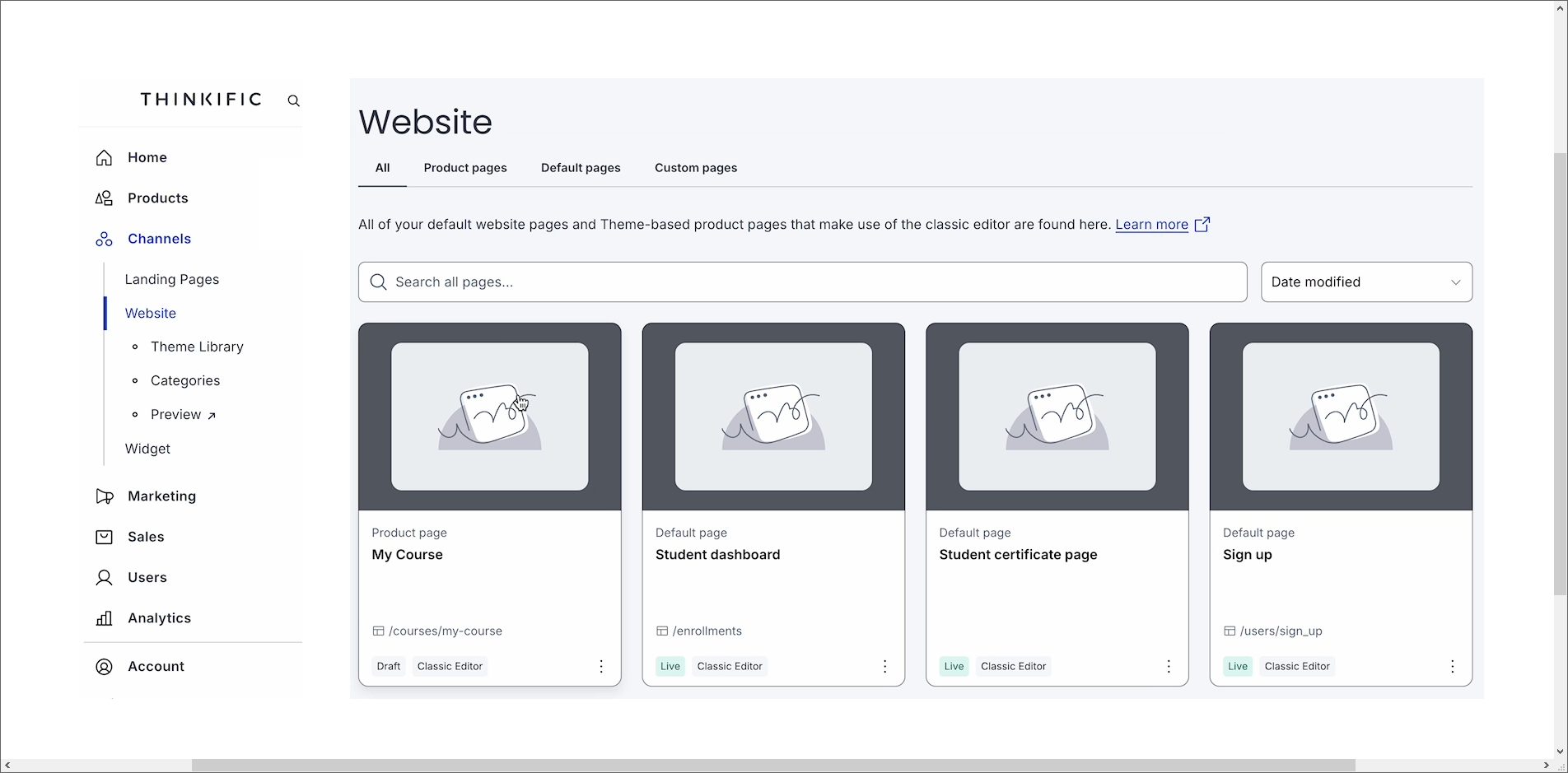
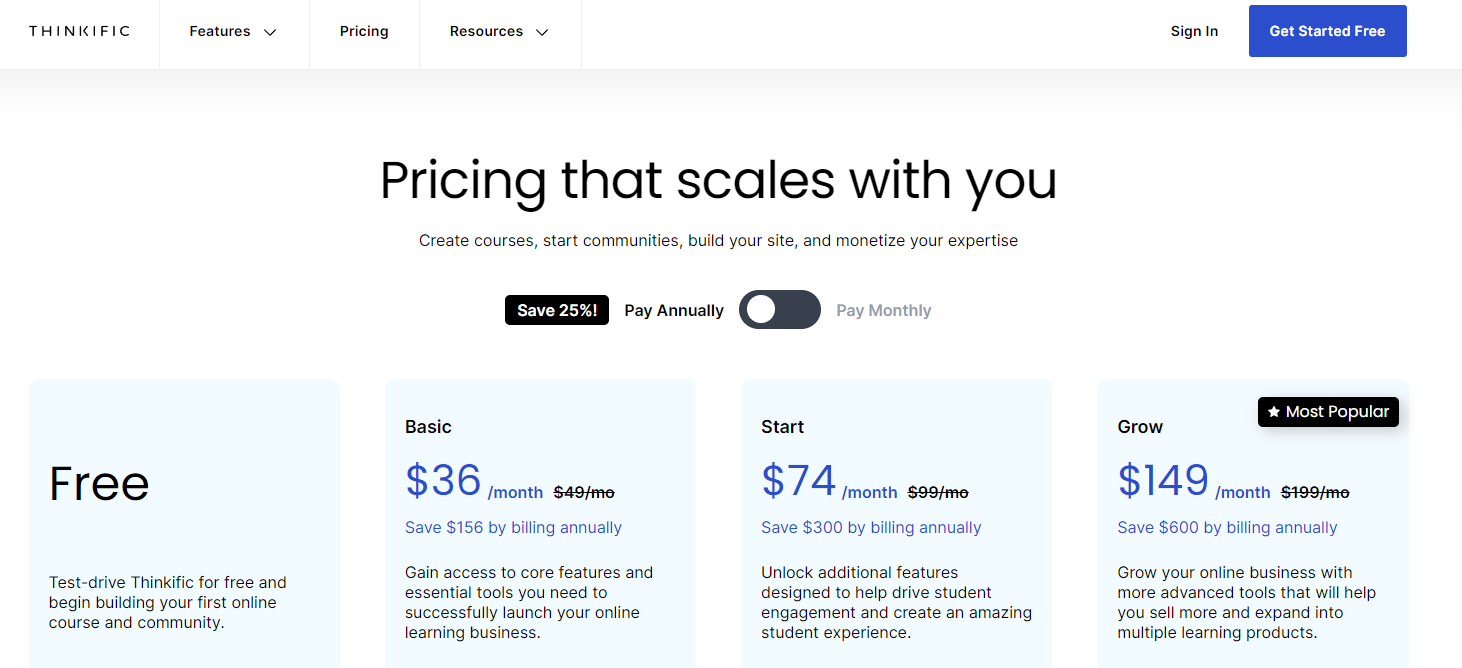
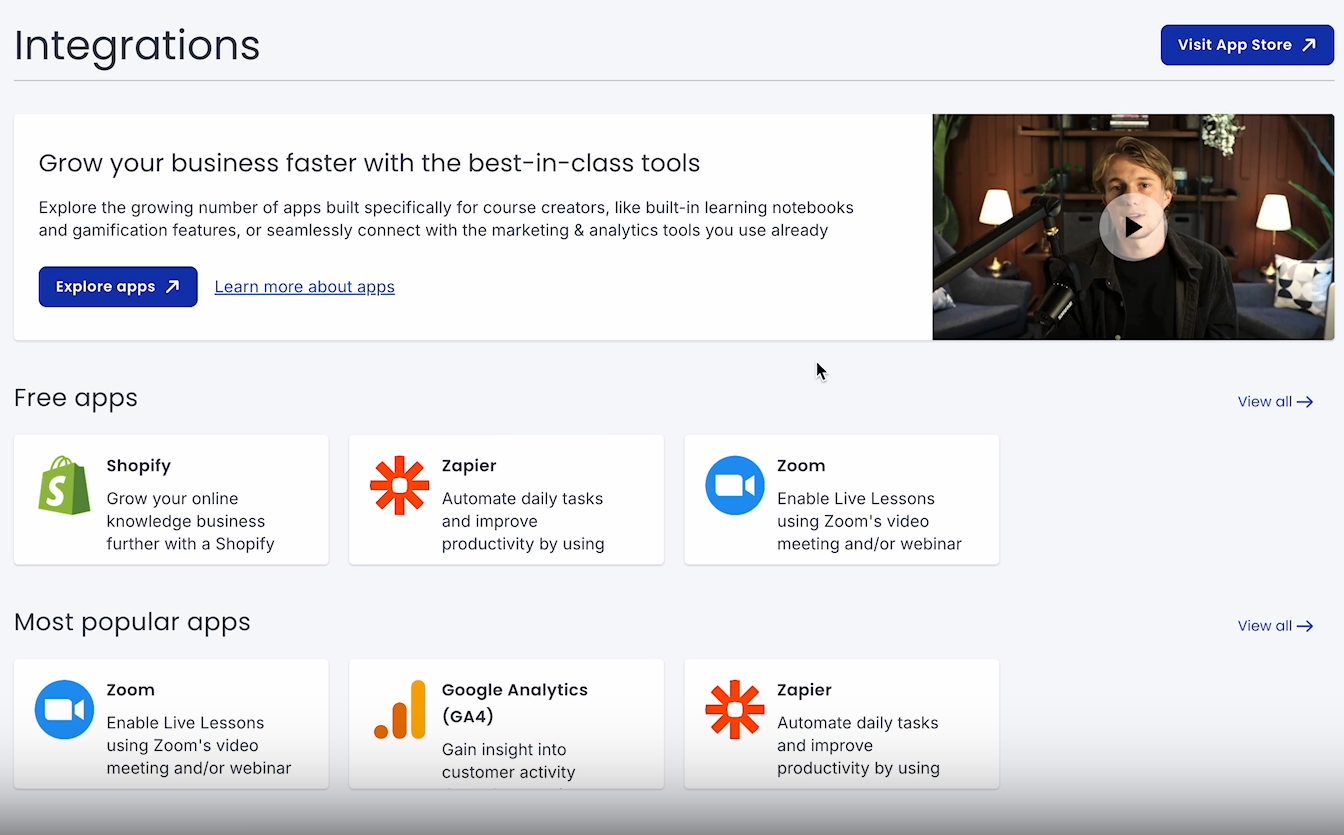

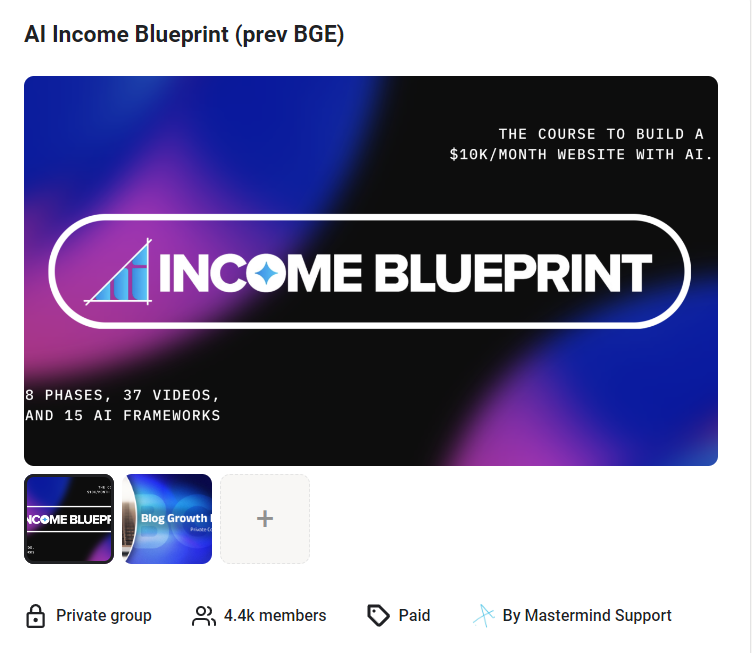

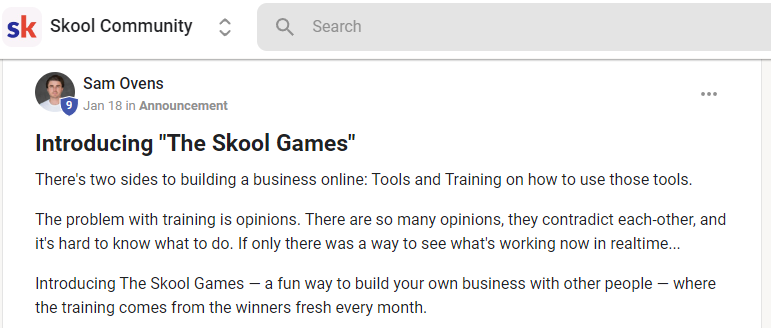
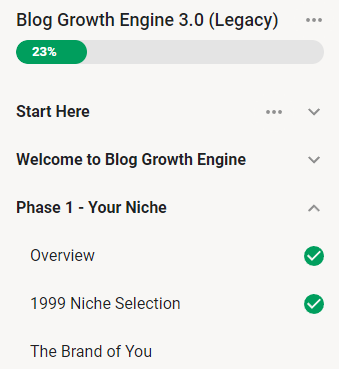
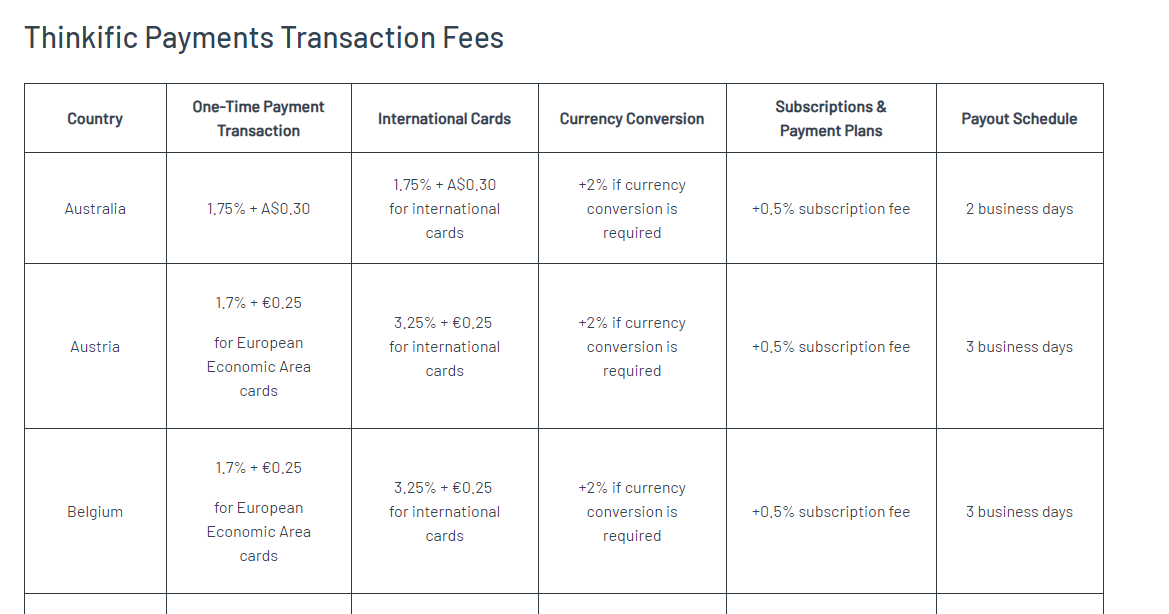
Thinkific has been the go-to for online courses for years.
But now, Skool is quickly gaining popularity, raising the question:
Is it time to leave Thinkific behind?
After making $5M in course sales, I’m here to give my honest opinion.
Here’s the situation:
My online courses used to run on Thinkific. Now I’ve switched to Skool.
And in this post, I’ll share my thoughts on these two platforms.
What Is Thinkific?
Thinkific is an all-in-one platform.

It’s been designed to help creators build, market, and sell online courses and digital products.
Whether you’re an individual expert or a large organization, Thinkific streamlines knowledge sharing.
Who is Thinkific for?
I believe educators, entrepreneurs, and organizations of different sizes can profit from it.

The platform can work if the entity wants to create and monetize online learning experiences.
Core Features
Thinkific has features that simplify everything from creating a course to marketing it.
These include:
- Tools to create online courses from scratch
- A website and landing page builder
- Community management features
- The ability to host live events
- Support for creating a mobile app
- Options for digital downloads
- Marketing and sales tools to grow your business

User Interface and Experience
Thinkific prides itself on having a user-friendly interface.
This interface caters to creators with all levels of technical expertise.
Whether you’re new to this or have years of experience, the platform offers a step-by-step process for your online business setup.
The intuitive course builder, AI-powered content creation tools, and drag-and-drop website builder help ensure a smooth experience.
Plus, the mobile-responsive design means your content looks great, no matter the device.
In short, the learning curve is gentle enough for beginners.
At the same time, there’s plenty of depth for more advanced users.
Feature Set and Capabilities
Most people think Thinkific is just about course creation.
It’s not.
It provides a robust set of tools that let you build and sell a variety of digital learning products:
- Community Building: Features like discussion forums, member profiles, activity feeds, and a mobile app make it easy to engage your community.
- Live Events and Coaching: You can host webinars, offer one-on-one coaching, or even provide group coaching sessions.
- Digital Downloads: Set up downloadable products that easily tie into your courses.

- Website and Marketing Tools: Thinkific provides customizable themes, a landing page builder, email marketing integration.
- Affiliate Program Management: This makes getting others to promote your offers easy.
- Sales and Monetization: Flexible pricing options (including one-time payments, subscriptions, and payment plans) allow you to offer your courses in the way that suits your audience best. You can also bundle products and create coupons for promotions.

Pricing and Plans
Thinkific offers a range of pricing plans that suit different stages of business growth:

- Free plan: Gives you a taste of the platform with limited features.
- Basic plan: $36/month (annual billing) or $49/month (monthly).
- Start plan: $74/month (annual) or $99/month (monthly).
- Grow plan: $146/month (annual) or $199/month (monthly).
- Plus plan: Custom pricing designed for larger organizations.
The higher the tier, the more features you unlock.
Customer Support and Resources
If you ever run into an issue, Thinkific has several support options to get you back on track.
You’ll find a comprehensive knowledge base, video tutorials, community forums, and email support.
Live chat is available for all paid plans with the “Grow” plan, and you can also get phone and priority email support.
The abundance of self-help resources makes finding the answers you need easy.
Integration Options
Thinkific plays well with others.
It offers integrations with popular marketing, analytics, and payment tools.
Some of the top integrations include:
- Marketing: Mailchimp, ConvertKit, ActiveCampaign
- Analytics: Google Analytics, Facebook Pixel
- Webinars: Zoom, WebinarJam
- Payment processors: Stripe, PayPal
- CRM: Salesforce, HubSpot
- Automation: Zapier
If you need more customization, there’s an API that allows you to create custom integrations.

Scalability and Performance
Thinkific is built to grow with your business.
You can create unlimited courses and enroll unlimited students on all paid plans.
Thinkific also provides bulk enrollment tools and advanced reporting features as your student base grows.
For businesses on higher-tier plans, there’s even an option to white-label the platform and have dedicated account management.
Thinkific’s infrastructure is solid and should handle high traffic without compromising performance.
What Makes Thinkific Stand Out?
There are a few unique features that give Thinkific an edge over competitors:
- AI-powered course creation assistance helps you design courses faster.
- A branded mobile app option gives you a professional edge.
- Comprehensive community-building tools boost engagement.
- Flexible content delivery options—whether self-paced, scheduled, or blended learning.
- The platform’s scalability supports businesses of all sizes, making it ideal for those planning to grow.
Pros and Cons
Like any platform, Thinkific has its strengths and weaknesses:
Pros:
- The platform is easy to use, even for beginners.
- It offers various features covering course creation, marketing, and sales.
- Community-building tools are robust, helping increase student engagement.
- There are flexible pricing options suitable for businesses at different stages of growth.
- Thinkific has a strong ecosystem of integrations, making it adaptable to your existing tools.
- Its scalable infrastructure means it can grow alongside your business.
Cons:
- Some of the more advanced features are only available on higher-tier plans.
- Mastering all of the available features can take time.
- There could be extra costs from add-ons and third-party integrations.
Where Thinkific Excels
Thinkific shines in several scenarios, including:
- First-time creators launching their first online course.
- Educators who are already established but want to scale their online presence.
- Organizations that need to implement employee training programs.
- Coaches or consultants looking to offer a mix of online and live learning experiences.
- Content creators looking to monetize their knowledge and expertise through digital products.
What Is Skool?

Skool is an platform designed for simplicity.
It aims to make it easy for coaches, consultants, and information entrepreneurs to build thriving online communities and host courses.
It also excels when it comes to engagement.
Its user-friendly features set it apart from platforms that try to cater to a wider audience.
At its core, Skool is built to help you streamline the process of creating and monetizing online communities.
Whether you’re a coach looking to engage clients or an entrepreneur wanting to host courses, Skool focuses on making things simple and effective.
Here’s what Skool offers:
- Community Management: Skool helps you manage a vibrant community with ease.
- Course Hosting: You can host unlimited courses within your community.
- Gamified Engagement: The platform boosts interaction with a personalized leaderboard and gamification elements.
- Mobile App: With a mobile app for iOS and Android, staying connected on the go is a breeze.
- Flexible Pricing: Skool offers options for both subscription-based and one-off courses.
Skool’s Key Areas
Here are the main things to know about this platform.
1. User Interface and Experience
Skool keeps things clean and simple.
The platform is designed with usability, offering a straightforward interface that minimizes distractions and focuses on the essentials.

Here’s what this means for you as a course creator:
- Clutter-Free Design: You won’t get bogged down by unnecessary features.
- Single Sign-On (SSO): Manage multiple groups easily without users logging in separately.
- Engagement-Boosting Tools: With features like personalized leaderboards and detailed member profiles, it encourages community interaction.
- Low Learning Curve: Both creators and members will find it easy to navigate.
Pricing and Plans

Skool keeps things simple with its pricing:
- 14-day Free Trial: Try the platform before committing.
- $99/month for One Community: This flat rate covers everything you get. There are no upsells you’ll have to purchase.
4. Customer Support and Resources
You can get support by filling in a customer support form.
When I needed help, I got responses back within a few hours.
There’s also a large community of people waiting to help within the Skool Games program.

This course comes directly from those making the most money in school.
The idea is to offer you all the insights you’ll need to build and monetize your community.
This program is a great way to get your foot in the door and connect with other top creators.
5. Integration Options
Skool’s integrations are basic but useful.
You can connect with Zapier, a no-code automation tool.
This integration allows thousands of processes to be automated and linked with popular apps.
Strengths and Weaknesses
Let’s break down what Skool does well and where it falls short:
Pros:
- Simple and Clean Interface: It’s easy for creators and community members to use.
- Focus on Engagement: Features like gamified leaderboards and chat keep members active.
- Unlimited Users and Courses: You can scale as much as you need.
- Mobile App: Engage your audience from anywhere with ease.
- Skool Games Program: A fantastic resource for learning how to grow and monetize your community.
Cons:
- No Native Video Hosting Yet: You’ll have to use third-party video hosting storage to upload online videos.
- Lacks Quiz Building Abilities: No built-in quizzes, which might be a dealbreaker for some.
- No Funnel Builder: You’ll need external tools to build sales funnels.
- Limited to One Community Per Subscription: The costs will increase if you run multiple communities.
Who Should Use Skool?
Here’s where Skool works best:
- Coaches who want to create a tight-knit group around their expertise.
- Consultants offering support and education to clients.
- Information Entrepreneurs who need a platform to host membership sites.
- Educators looking for a community-driven learning experience.
- Businesses aiming to build a central hub for customer education and support.
Skool can potentially deliver a significant ROI, particularly for those prioritizing community engagement.
Here’s why:
- The community-building tools keep members engaged.
- Gamification elements encourage participation.
- With recurring revenue, your community can generate ongoing income.
- Skool’s simplicity reduces the time you spend on admin tasks.
Comparing Skool vs Thinkific
Let’s now put the two platforms head to head.
We’ve been using Skool to bring our community together, host courses, and share live events, and it’s been a straightforward process from the start.
One of the things we love about Skool is how easy it is to set up and run.
There’s no steep learning curve.
Once you’ve set up your community, it’s all about adding value without having to tinker with the platform constantly.
For us, it’s been perfect for building multiple communities.
Each community has its description, member count, and even a leaderboard to see who’s most active.
This level of transparency and engagement has built community spirit.
And this would be something that requires more work on other platforms.
Could Thinkific Handle This?
Now, we used to use Thinkific before.
On the course creation front, things were great.
Thinkific excels at course creation.
It offers features like quizzes, certificates, and detailed progress tracking, which were great for our structured learning.
For building communities?
Things were more difficult.
Thinkific does provide discussion forums.
It just doesn’t have Skool’s dynamic tools (and ease of access) to keep members coming back to engage.
Here, I think of leaderboards and gamification as two critical areas.
We can see who’s been contributing the most and even track engagement over the last 7 days, 30 days, or all time.
If community-building is your focus and you’re using Thinkific, you might miss out on some great stuff.
Course Creation
Skool allows us to organize our courses into modules and lessons.
This makes it easy for people to follow along and even mark lessons as complete.

It’s a simple setup, but it works well for our members who appreciate the straightforward layout.
Thinkific, on the other hand, gives more flexibility.
You’d gain access to more tools like multimedia support and quizzes.
Overall, this could provide a better learning experience.
If your primary focus were on delivering highly interactive courses, Thinkific’s advanced features would shine.
For our business right now, Skool’s simplicity perfectly fits our needs.
Events and Live Interaction
We host frequent live events for our members, and Skool makes it easy to keep everyone in the loop.
There’s a dedicated calendar section where members can see upcoming events, add them to their personal calendars, and access all the details in one place.
The only issue?
We have to use 3rd party tools like Google Meet or Zoom.
This isn’t complex to set up, but it is something to consider.
If we moved to Thinkific, we’d still have to use third-party tools.
So it’s pretty much a tie here for both platforms.
Pricing vs. What You Get
Skool keeps it simple with a flat rate of $99 per month.
This pricing gives us one group with:
- Unlimited members
- Courses and, most importantly
- The community engagement features we rely on.
The transaction fees are also among the lowest in the industry at 2.9%.
For us, this is great value for money.
Thinkific, while flexible with pricing, has more of a tiered structure.
There are also varying transaction fee percentages.

Depending on where your business is registered, this might make more or less sense for you.
In terms of pricing, if we wanted more of Thinkific’s advanced features, we’d need to upgrade to a higher-priced plan.
And that would add up as we scale.
Mobile Experience
One of the standout features of Skool is its dedicated app.
This allows our members to stay connected on the go and gives them the abilities to switch between communities and access course content.
This can be a distraction when members are part of multiple groups.
At the same time, it’s a great way to keep engagement high when people are away from their desks.
On the Thinkific side, there is a brandable mobile app.
This means you can customize the app to fit your brand – and your brand only.
This feature can give your business a professional, seamless mobile experience for your learners, letting them access courses anytime, anywhere.
If having a branded mobile presence is important to you, this could be a big advantage.
So, if your priority is branding and you want full control over the look and feel of your app, Thinkific’s brandable app might be the better fit.
However, if fostering community engagement is more critical, Skool’s app remains a strong contender.
Conclusion
Skool has become the right fit for our business because it emphasizes community and engagement.
The leaderboard, the chat features, and the ease of running multiple communities make Skool feel like home for us and our members.
If we switched back to Thinkific, we’d gain some advanced course creation tools and customization options.
We’d also probably lose the sense of community that Skool fosters.
Ultimately, the decision comes down to what you prioritize.
If you’re looking for a simple, streamlined, and community-focused platform, Skool might be the perfect choice.
But if your main focus is building more complex courses with all the bells and whistles, go with Thinkific.
Their advanced features are worth exploring.
Further reading on AdamEnfroy.com: If you’re looking for more insights on platforms like Skool and Thinkific, you might want to explore the best community platforms to find the right fit for your audience.
You can also dive into the top membership site platforms to see how they stack up.
Check out my guide on the best online learning platforms if online learning is your focus.
For more advanced insights, my learning management Systems guide might be just what you need to structure your course for success.






